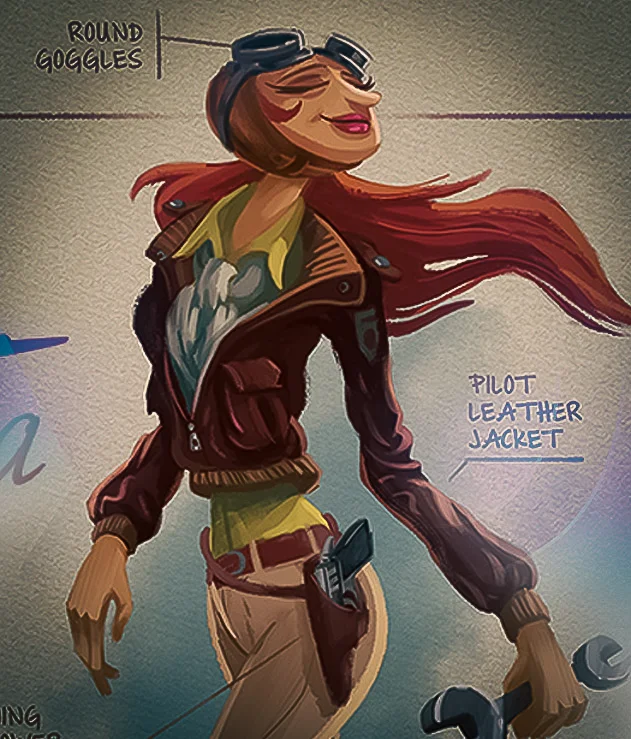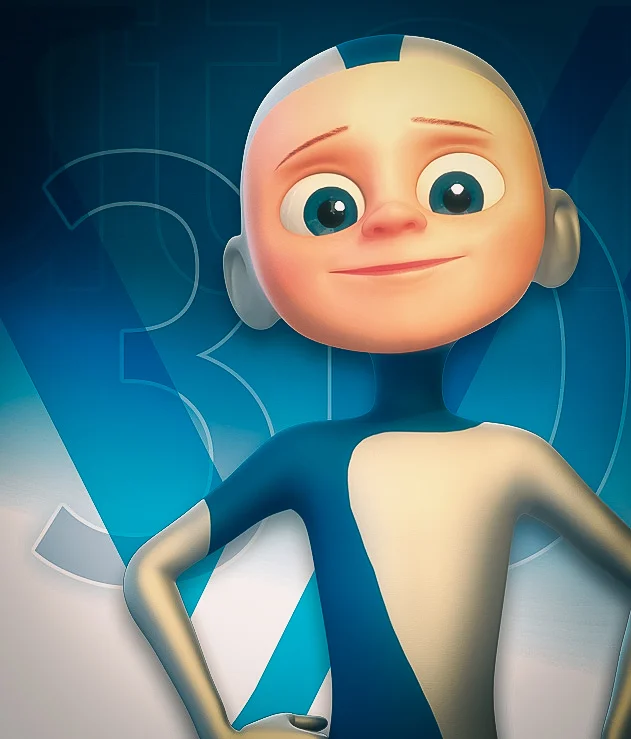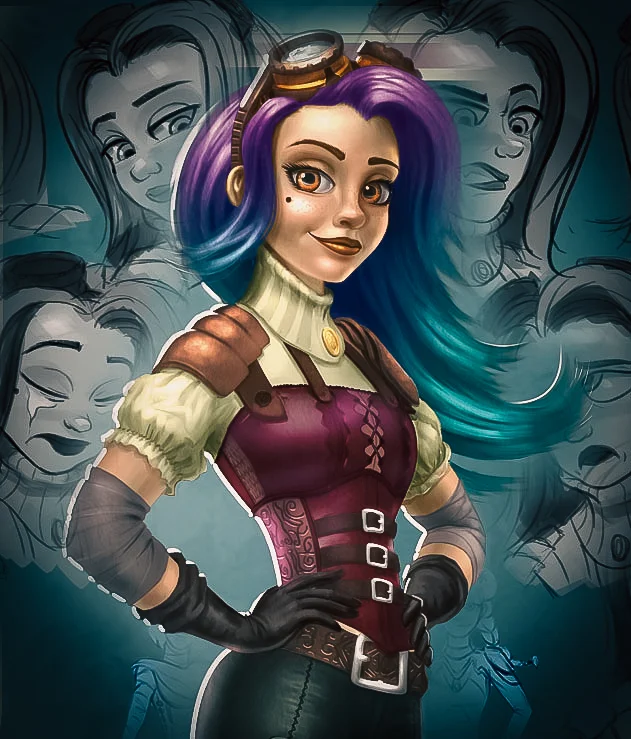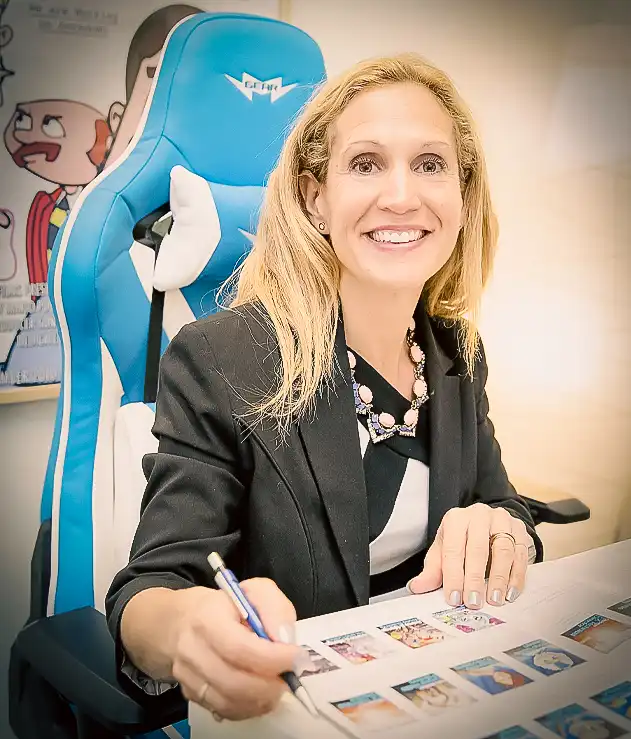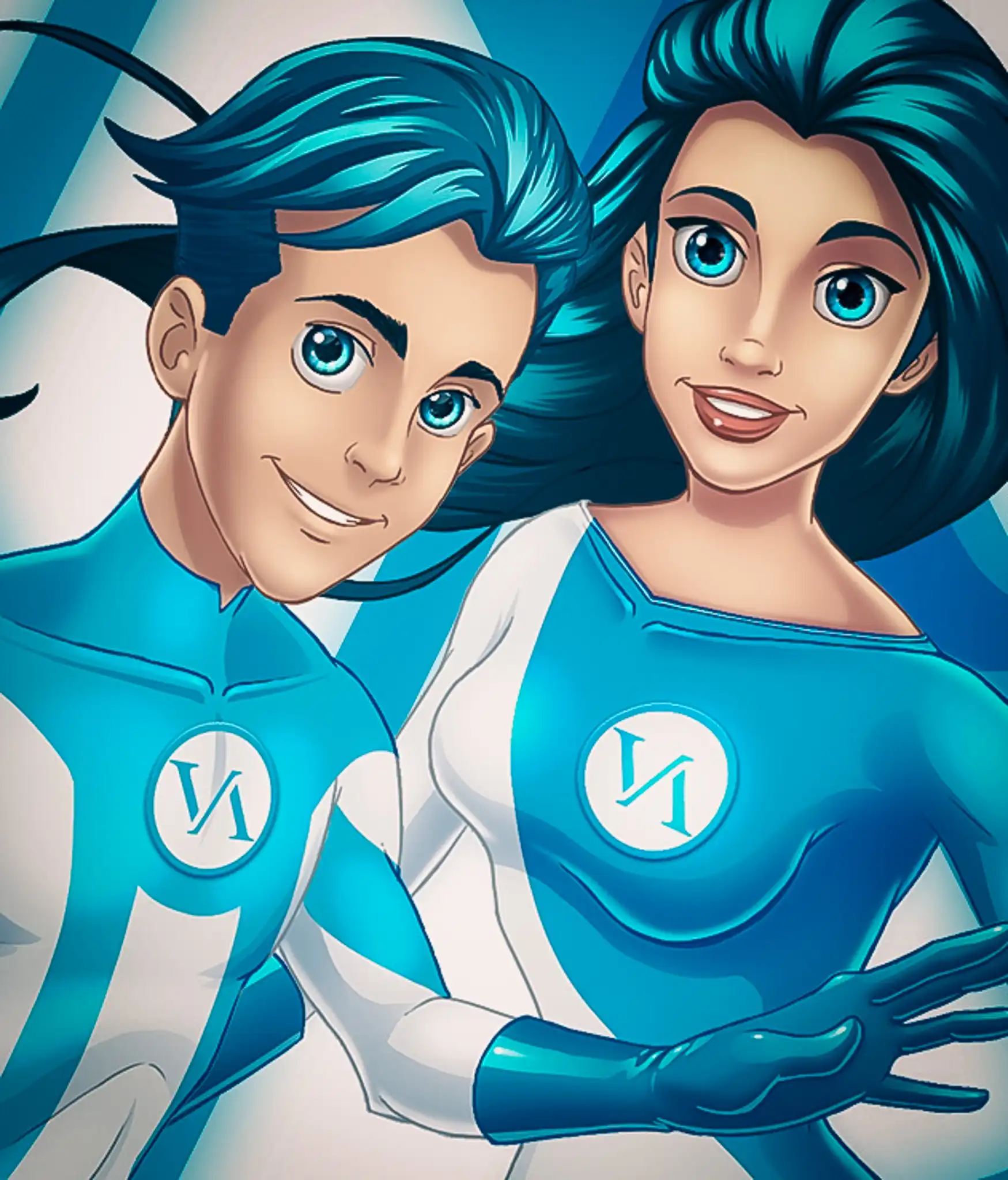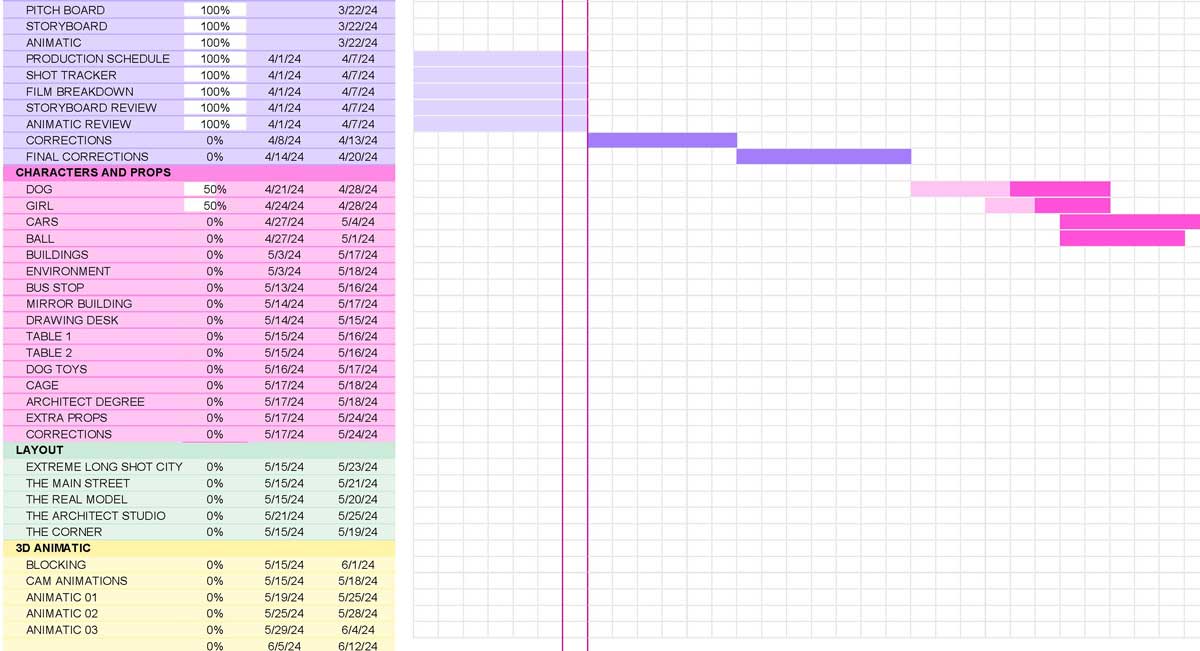 Image by: Angelica R. R., VANAS Student
Image by: Angelica R. R., VANAS Student
What is an Animation Production Pipeline?
Did you know that some of your favorite animated movies can take years to produce? From beloved classics like "Toy Story" to modern masterpieces like "Frozen," the process of bringing animated videos to life is a complex and highly structured undertaking. This is where the animation production pipeline comes into play.
In this article, we will delve into the world of animation production and explore the concept of the animation production pipeline. We will take a closer look at the stages involved, the types of animation techniques used, and the key elements that contribute to the creation of captivating animated videos.
Key Takeaways:
- The animation production pipeline is a structured process used to create animated videos.
- Animation production involves various stages, including pre-production, design, animation, sound design, and post-production.
- Different types of animation techniques, such as 2D, 3D, motion graphics, and video animation, can be utilized in the pipeline.
- Each stage of the pipeline plays a crucial role in bringing the final animated video to life, from planning and concept development to editing and adding special effects.
- Studying animation at VANAS Online Animation School can provide aspiring animators with the knowledge and skills needed to excel in the field.
Understanding Animation Production
In the world of animation, various production techniques are used to bring visuals to life. Let's explore the different types of animation production, including 2D animation, 3D animation, motion graphics, and video animation, and understand how they play a crucial role in the animation pipeline.
2D Animation
2D animation is a classic technique that has been around for decades. It involves creating images that appear to move on a two-dimensional plane. This technique is commonly used in traditional hand-drawn animations, cartoons, and explainer videos. With its simplicity and charm, 2D animation continues to captivate audiences.
3D Animation
3D animation takes audiences to the next level by adding depth and realism to the visuals. It involves creating three-dimensional objects and characters using computer software. This technique is widely used in movies, video games, and architectural visualizations. With its ability to create immersive and lifelike environments, 3D animation has revolutionized the animation industry.
Motion Graphics
Motion graphics combine graphic design and animation principles to create visually appealing and engaging content. This technique involves animating elements such as text, icons, and illustrations to convey information, tell a story, or enhance the overall visual experience. Motion graphics are commonly used in advertisements, presentations, and user interfaces.
Video Animation
Video animation encompasses a wide range of animation techniques that are used to bring videos to life. It includes techniques such as stop-motion, cutout animation, and virtual reality animation. Video animation is a versatile technique that can be tailored to suit various styles and storytelling approaches.
Each animation production technique brings its unique characteristics and advantages to the animation pipeline. By understanding and utilizing these techniques effectively, animators can create captivating and visually stunning animated content.
The Stages of Animation Production
Animation production involves several stages that contribute to the creation of captivating animated videos, including cartoon animations and explainer videos. Each stage plays a crucial role in the overall animation pipeline, bringing the vision to life and delivering a high-quality final product.
Pre-production:
This stage lays the foundation for the entire animation process. It involves planning and concept development, where ideas are brainstormed, storylines are created, and characters and backgrounds are designed. This stage sets the creative direction and establishes a solid framework for the animation.Storyboard Development:
In this stage, the animators create visual representations of the script, mapping out the sequence of events in the animation. Storyboarding allows for the visualization of scenes, camera angles, and transitions, providing a blueprint for the animation process. It is a collaborative effort that involves animators, directors, and other team members.Character Design:
During character design, the animators develop the appearance and personality of the animated characters. This includes creating unique designs, selecting color palettes, and defining facial expressions and body movements. Character design is essential for creating relatable and visually appealing characters that connect with the audience.Animation:
The animation stage brings the characters and objects to life through movement. Skilled animators use various techniques, such as key-framing and rigging, to create realistic motion and performances. This stage requires attention to detail and a deep understanding of movement principles to achieve smooth and engaging animations.Sound Design:
Sound design enhances the overall viewing experience by adding audio elements that complement the animation. It involves incorporating background music, sound effects, dialogue, and voice-overs. Effective sound design helps to convey emotions, set the mood, and immerse the audience in the animated world.Post-production:
In the final stage of the animation pipeline, post-production, the animators add the finishing touches to the animation. This includes editing the footage, applying color correction, and integrating visual effects. Post-production ensures that the animated video is polished and ready for distribution.
By following this animation pipeline and navigating through these stages, animators can create captivating cartoon animations and explainer videos that captivate and engage audiences. Each stage is integral to the overall production process, contributing to the success of the final product.
Pre-production: Planning and Concept Development
Before diving into the animation process, the pre-production stage of the animation pipeline plays a crucial role in laying the foundation for a successful animated video. Planning and concept development are key aspects that set the creative direction and ensure a smooth workflow throughout the production.
During this stage, animators collaborate with directors, writers, and other members of the creative team to brainstorm ideas and bring them to life. This involves exploring various concepts, themes, and styles that align with the goals and objectives of the project.
Planning and concept development are essential in creating a compelling and engaging storyline that resonates with the target audience.
A critical aspect of the pre-production phase is creating a strong storyline. This involves developing a narrative structure, defining the plot points, and shaping the overall arc of the story. Animators dive deep into character development, ensuring that each character is well-rounded, visually appealing, and relatable to the audience.
Additionally, the pre-production stage involves creating detailed backgrounds and environments that visually complement the story and enhance the overall aesthetic appeal of the animation.
In this stage, the animation pipeline is carefully crafted, ensuring a seamless transition from one phase to another, setting the stage for a successful production process.
The pre-production stage often includes the creation of storyboards, which are visual representations of the script that map out the sequence of events. Storyboards help animators and directors visualize the intended shots, camera angles, and transitions, allowing for effective planning and communication throughout the production.
As with any creative process, planning and concept development in the pre-production stage require a collaborative approach. Animators, writers, directors, and other members of the team work together to refine ideas, iterate on concepts, and ultimately shape the direction of the animation.
By investing time and effort in the pre-production stage, animators ensure that the subsequent stages of the animation production pipeline proceed smoothly, resulting in a high-quality and impactful animated video.
Stay tuned for the next section, where we will explore in detail the crucial steps of designing and storyboarding in the animation production pipeline.
Designing and Storyboarding
When it comes to creating an animated video, designing and storyboarding are crucial steps in the animation pipeline. These stages allow animators to visualize the script and plan out the sequence of events in a visually captivating way.
During the designing phase, animators bring characters, backgrounds, and other elements to life. They carefully consider the style, colors, and overall aesthetic that will best convey the story's tone and message. This is where their creativity shines as they devise captivating visuals that captivate the audience.
Storyboarding follows the design process, helping animators organize the narrative by creating a series of panels that depict the essential scenes and actions. Storyboards act as a blueprint for the animation, guiding the team in creating a cohesive and engaging story flow. They allow the team to make decisions regarding camera angles, pacing, and transitions, ensuring a seamless storytelling experience.
Collaboration plays a vital role during the designing and storyboarding phase. Animators work closely with directors, writers, and other team members to bring their artistic vision to life while staying true to the overall project goals. This collaborative effort ensures that the animation aligns with the intended narrative and effectively communicates the desired message.
Designing and storyboarding are essential steps in the animation pipeline. They allow animators to bring their artistic vision to life and create a cohesive narrative that captivates the audience.
By investing time in the designing and storyboarding stages, animators set a strong foundation for the rest of the production process. These stages allow for experimentation, refinement, and feedback that ultimately lead to the creation of a visually stunning and compelling animated video.
Animation and Sound Design
During the animation and sound design stage of the animation pipeline, every movement and sound is carefully crafted to create a captivating viewing experience. Animators bring characters and objects to life through skillful techniques and meticulous attention to detail.
1. Movement and Expression: Animators use a variety of techniques to bring the characters to life. They carefully study the character's personality, emotions, and physical characteristics to create believable movement and expressions. From subtle gestures to dynamic actions, each frame is meticulously designed to capture the character's essence.
2. Timing and Pacing: Timing and pacing play a crucial role in animation. Animators use their expertise to determine the speed and rhythm of the movements, ensuring that the animation flows seamlessly and engages the viewer. By manipulating timing and pacing, animators can evoke different emotions and enhance storytelling.
3. Special Effects: Special effects are an essential part of animation. Animators use various tools and techniques to add visual elements that enhance the overall impact of the animation. Whether it's creating realistic fire, magical spells, or explosive action sequences, special effects take the animation to the next level.
4. Sound Design: Sound design plays a crucial role in creating an immersive and engaging animated video. Animators work closely with sound designers to select or create appropriate sound effects, background music, and dialogues. The right combination of sounds adds depth, emotion, and realism to the animation, making it a truly cinematic experience.
Animation offers endless possibilities for creativity and storytelling. Through careful attention to movement, timing, and sound, animators bring characters and worlds to life, captivating audiences of all ages.
By combining the art of animation with the science of sound design, animators masterfully create a visual and auditory experience that leaves a lasting impact on viewers. The animation and sound design stage is where the magic happens, transforming sketches and ideas into a vibrant and captivating animated video.
Post-production: Editing and Effects
Once the animation is complete, the post-production stage of the animation pipeline begins. This is where animators add the final touches to the project, ensuring that it is polished and professional. During this stage, various editing techniques are applied to enhance the overall visual experience of the animated video.
One of the key aspects of post-production is color correction. Animators carefully adjust the colors and tones in each frame to create a consistent and visually appealing look. This process helps to enhance the overall mood and atmosphere of the animation, making it more engaging for the audience.
Additionally, visual effects are often added during the post-production stage to enhance the animation further. These effects can range from subtle enhancements to dramatic additions, depending on the creative vision of the project. By incorporating visual effects, animators can bring additional depth and excitement to the animated video.
Throughout the post-production stage, close attention is paid to the details of the animation. Animators meticulously review each frame to ensure that it aligns with the intended vision for the project. This includes checking for any errors or inconsistencies and making necessary adjustments to maintain a seamless visual flow.
Ultimately, the post-production stage is crucial in bringing the animation to its final form. It is in this stage that the animation truly comes to life, as the editing and effects work together to create a polished and professional finished product.
Study Animation at VANAS Online Animation School
If you have a passion for animation and want to turn it into a rewarding career, VANAS Online Animation School is the place for you. With our comprehensive animation programs, you can study animation at your own pace and gain the skills needed to become a professional animator.
At VANAS, we offer a range of courses that cover various animation techniques and production pipelines. Whether you are interested in 2D animation, 3D animation, motion graphics, or video animation, our expert instructors will guide you through the process and help you hone your skills.
By studying animation at VANAS, you will have access to a wealth of resources and support. Our industry-experienced faculty will provide personalized feedback and guidance, ensuring that you receive the best education possible. Additionally, our online learning platform allows you to connect with a community of fellow animators, fostering collaboration and networking opportunities.
Don't miss out on the chance to make your animation dreams come true. Enroll in VANAS Online Animation School and take the first step towards becoming a professional animator. Learn more about animation production pipelines and unleash your creative potential with us.
FAQ
What is an Animation Production Pipeline?
An Animation Production Pipeline is a systematic process that involves various stages to bring animated videos to life. It includes pre-production, storyboard development, character design, animation, sound design, and post-production.
What are the different types of animation production techniques?
Animation production techniques include 2D animation, 3D animation, motion graphics, and video animation. Each technique has unique characteristics and is used depending on the desired outcome of the animated video.
What are the stages of animation production?
The stages of animation production include pre-production, storyboard development, character design, animation, sound design, and post-production. Each stage plays a crucial role in the overall pipeline and contributes to the final product.
What happens during the pre-production stage of the animation pipeline?
In the pre-production stage of the animation pipeline, planning and concept development takes place. This includes brainstorming ideas, creating a storyline, and developing characters and backgrounds for the animated video.
What is the role of designing and storyboarding in animation production?
Designing and storyboarding are essential steps in animation production. These processes involve creating visual representations of the script and planning out the sequence of events in the animated video. Collaboration between animators, directors, and other team members is crucial during this stage.
How does animation and sound design contribute to the final animated video?
Animation and sound design bring characters and objects to life through movement and enhance the overall viewing experience. Techniques such as character animation and sound effects are used to create a compelling and immersive animated video.
What happens during the post-production stage of animation production?
In the post-production stage, animators add final touches to the animation. This includes editing the video, color correction, and adding visual effects to create a polished and professional animated video.
How can I study animation at VANAS Online Animation School?
At VANAS Online Animation School, you can enroll in animation courses and become a professional animator. Our school offers a comprehensive curriculum and resources to learn more about animation production pipelines and kick-start your animation career.

